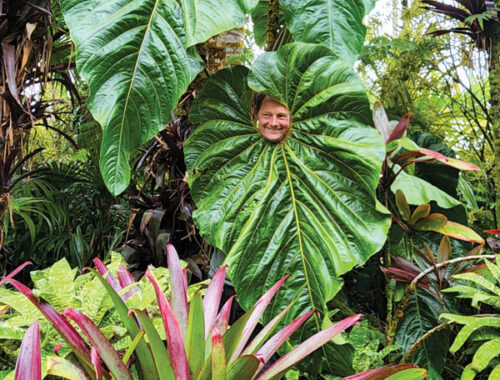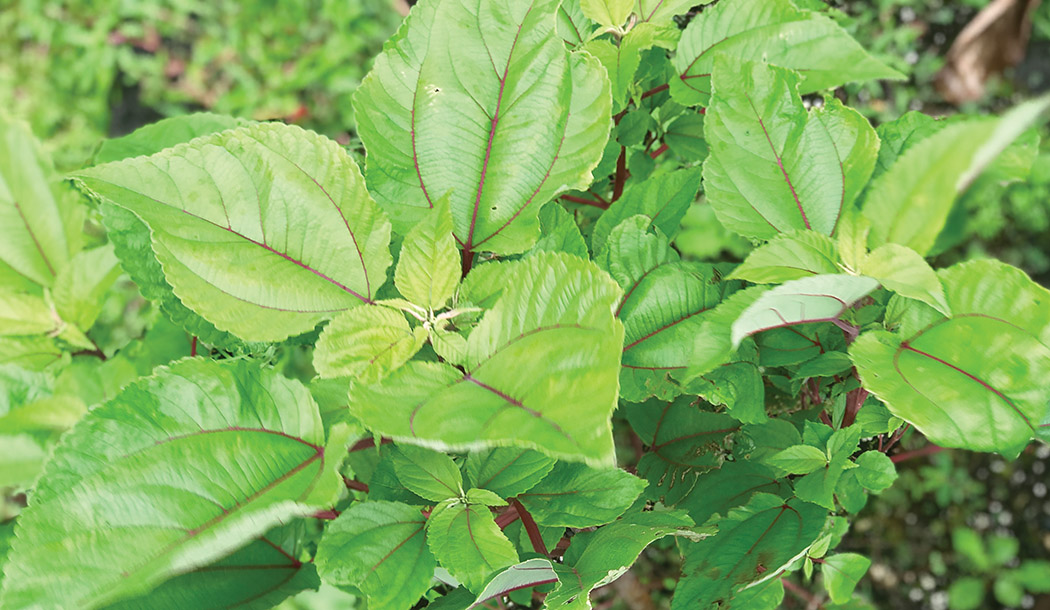
Hawai‘i Island Tea – Craft Brew
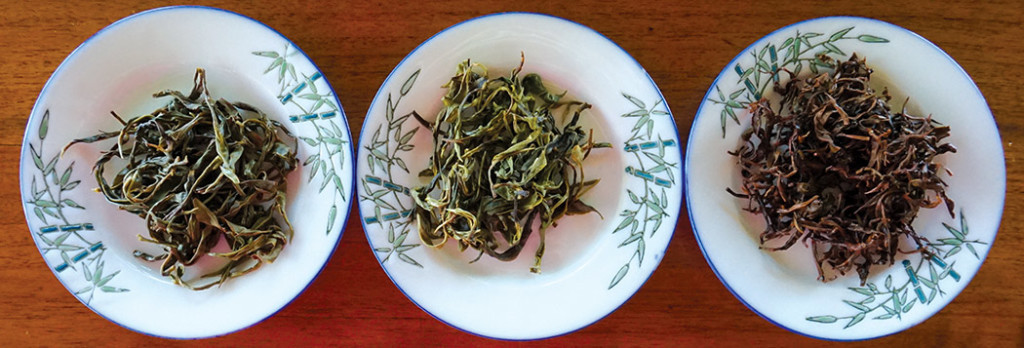
By Brittany P. Anderson
The quest for Hawai‘i Island grown tea starts with the perfect storm of volcanic acidic soil and humidity. Those bold enough to take the journey tend to their plants with patience and a kind hand. The reward is a tea finishing with a bright sweetness that makes Hawai‘i Island teas in demand all over the world.
History of Hawai‘i Island Tea

Tea was introduced to Hawai‘i Island in the late 1800s as a potential cash crop. The idea was to farm tea commercially in the fashion of sugarcane and pineapple. Plantation owners reviewed growing and harvesting methods finding it too labor intensive. According to numerous articles and researchers, the Hawaiian Coffee and Tea Co. established a five-acre plantation in Kona in 1887. Historians are unable to identify why the venture was abandoned by 1892, however speculate that it was due to the rising profits of coffee in the region. Only a few US plantations of that era grew tea and fewer still were successful. Domestic US tea production proved costlier than importing tea from China, Japan, or India.
Culturally, tea was prevalent throughout Hawai‘i Island, however attempts to grow the shrub were dormant for the early 20th century—until the 1950s. University of Hawai‘i at Hilo horticulture professor, Dr. Philip Ito, brought tea seeds back from his visit to China. He cultivated a small tea garden at his Waiākea home. Interest in tea as a commodity renewed in the 1960s as sugar continued to decline. Hawai‘i Island’s sugar powerhouses C. Brewer and Amfac both toyed with the idea of turning their sugar plantations into commercial tea operations.
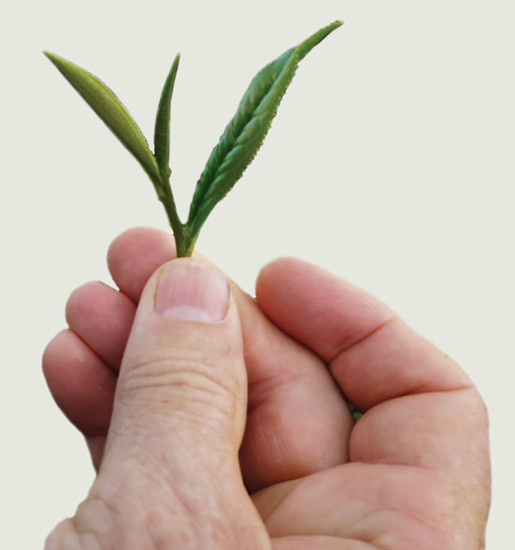
Both companies turned down the opportunity, though Alexander & Baldwin on Maui partnered with Lipton’s for a brief time until, like previous attempts, growing tea commercially in the state proved cost prohibitive. Efforts focused on the untested quality, maturity process, and relatively small profits when compared to coffee at the time.
John Cross, former land manager for C. Brewer, took advantage of the plantation’s former investigative research and planted tea on his family farm in Hakalau (north of Hilo) in 1993. Shortly thereafter, Dr. Francis Zee, horticulturist with the United States Department of Agriculture, was introduced to Dr. Ito’s tea plants and began experimenting with processing the leaves utilizing a microwave oven.
By 1998 a cooperative project between Hawai‘i Department of Agriculture, USDA—Agriculture Research Services, and UH College of Tropical Agriculture & Human Resources began evaluating adaptable tea plants focusing their testing on resilience in several microclimates on the island. This partnership proved to be the catalyst tea needed, and interest in growing tea on Hawai‘i Island began to take hold.
Tea of Today
The type of tea—oolong, green, or black—is determined by the processing method used and not by the cultivar. A tea’s taste, much like coffee and wine, is highly dependent on the soil, topography, and climate present where the plant is grown—known as terroir.
Māmaki, the indigenous shrub used in Native Hawaiian traditions, is grown and harvested much the same way as tea. Though popular locally, it is not considered a true tea because it lacks caffeine.
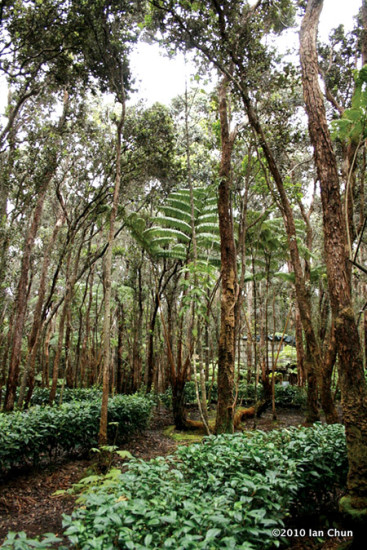
Many of the island tea growers come from a background that is outside of agriculture. For Eva Lee and her husband Chiu Leung, of Tea Hawaii & Company, growing tea is both a cultural and artistic experience. “We both come from a cultural background in the aspects of tea,” Eva Lee explains. Eva and Chiu connect with their Chinese heritage through growing, processing, and serving tea grown on their tea estate in Volcano Village. Chiu is an accomplished potter who has combined his artwork with his love of tea to create porcelain tea cups. Chiu hand throws each cup and pairs his collections with their harvest to enhance the tea drinking experience.
There is something spectacularly meditative in harvesting the tiny new growth leaves along the hedgerows of tea as mist rolls through. Both Eva and Chiu are intimately involved in the daily production of their teas, and are advocates for tea agriculture on Hawai‘i Island. Their approach is based in artistic integrity forming strong relationships in local and global tea.
On the Hāmākua Coast, Onomea Tea Company is perched atop a bluff overlooking Onomea Bay. Mike Longo and Rob Nunally went into the tea business through their love of a good cup of tea. Prior to moving to Hawai‘i Island, Mike Longo was a daylily hybridizer and successful horticulture entrepreneur while Rob Nunally was in the tech industry. The plan was to move to Hawai‘i Island and continue hybridizing daylilies on their newly purchased agricultural land. However, the daylilies had other plans. “They just didn’t bloom consistently, so we started looking at other crops for our agricultural land,” Rob explains. As the pair were discussing options, Rob held in his hands a cup of tea—their fate was sealed.
The duo started with 40 seeds in 2004 and now tend more than 3,500 plants that are a combination of varieties including their own hybrids. Onomea Tea Company focuses on clean sustainable agriculture minimizing inputs and their overall footprint. “Growing tea is the easiest on the land because you don’t have to spray it, you don’t have to pull it up, till the soil, replant, rotate it. You just let tea grow and trim it,” Rob speaks passionately on his lānai overlooking rows of tea shrubs and the Pacific.

Cultivating the Future of Tea
The Hawai‘i Tea Society has been an active force cultivating tea growers across Hawai‘i Island. The volunteer-based organization was key in tea-based research, legislation, and advocacy. A bill was introduced by the state agricultural committee speaking to origin significance within the Hawai‘i tea industry. Legislation was introduced to solidify that when a tea product said it was made in Hawai‘i, it was actually grown in Hawai‘i. The bill was not adopted, and many of the tea growers shifted focus to expanding their plantations to keep up with demand. The organization is currently awaiting funding for programs in 2018.
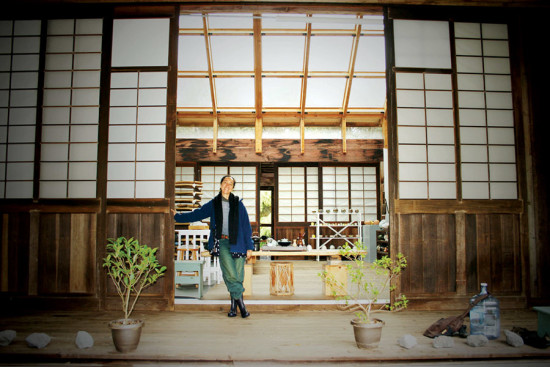
Hawai‘i Island grown tea is increasingly recognized in US-based and worldwide competitions. The Tea Of The United States (TOTUS) Awards project, of which Eva Lee is Executive Director, was held in 2015 with the help of state and federal grants. Ten US states were represented in the first US-based tea competition. Onomea Tea Company as well as Eva Lee’s Tea Hawaii & Company won a substantial number of awards. “We’d love to make this competition an annual event,” Lee remarks. However, funding for the project has been difficult to attain.
Hawai‘i State has more tea growers than any other state in the US, with the vast majority on Hawai‘i Island. Because of their popularity at the TOTUS awards, the demand for Hawai‘i tea is growing. The price for Hawai‘i grown tea ranges from $100 to $400 per pound, as of 2016. Tea from China and other higher producing areas fetch around $1.50 per pound. Because teas from Hawai‘i Island specifically are highly sought after, Eva Lee hopes to inspire more tea producers.
Rob Nunally agrees that more growers on Hawai‘i Island are needed. “There’s no reason tea can’t be made on a commercial level here, we just need more people growing,” Rob notes.
Harvesting is labor intensive when picking by hand, and many tea farmers have difficulty finding labor willing to pick with the care needed. Weather is also a concern. “You can’t pick in the rain, so I have to call people and tell them to go back home before they even arrive,” Rob bemoans.
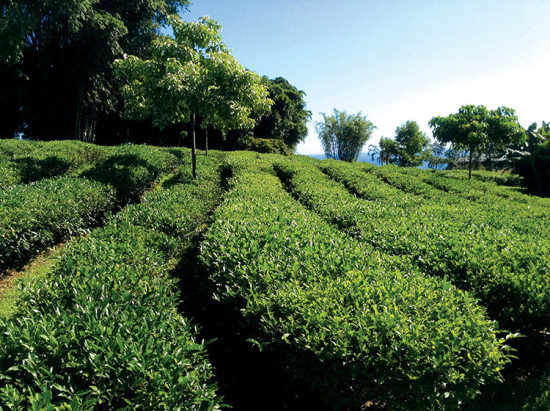
“We’re experimenting with mechanical harvesters like the big plantations,” Rob explains as he pours a cup of sweetly subtle green tea. Onomea Tea Company is a solar powered operation, so Rob and Mike are experimenting with electric trimmers to decrease manpower and increase yield. Agritourism has become a popular secondary stream of income for tea growers across the island. Onomea Tea Company and Tea Hawaii & Company host farm tours, and many other tea farmers do as well. Each farmer’s operations is as different as their terroir. Eva and Chiu offer an agroforestry sanctuary with tea integrated into the landscape and hold tea tastings in their art studio tasting space. Rob and Mike offer a plantation-style setting complete with tea tasting on the lānai.
Tea on Hawai‘i Island is clearly gaining a following at home and abroad. According to a 2011 market feasibility study, specialty tea is “well positioned for financial growth” within the United States, and tea consumption increases annually. “There is a specialty tea market, before there wasn’t that consumer awareness there is now,” Eva remarks.
Hawai‘i Island is uniquely situated with most of the world’s climates—the uniqueness of each tea grower’s terroir means each tea has its own distinctive taste. Tea grows well in the understories of Volcano Village, and with the ocean breeze of the Hāmākua, everyone embracing their differences providing a range consumers are happy to experience. ❖
For more information, contact:
Onomea Tea Company: onotea.com
Tea Hawaii & Company: teahawaii.com
Hawaii Tea Society: hawaiiteasociety.org
Mahalo Island Naturals – Local Agriculture Story Sponsor

